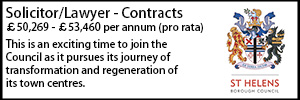Supreme Court to hear appeal over listed building status and sale of limestone piers
- Details
The Supreme Court has given the owner of a Grade II listed house permission to appeal in a dispute over a council’s enforcement action over the sale of two early 18th century limestone piers.
The background to the case was that Marcus Dill, owner of Idlicote House, inherited the piers from his father. However, he did not know they were listed and in 2009 sold them at auction for £55,000, when they were exported to an unknown destination.
Stratford-on-Avon District Council discovered this six years later and Mr Dill applied for retrospective listed building consent for their removal.
Both Historic England and the Society for the Protection of Ancient Buildings said they were of special architectural and historic interest, and recommended enforcement action, which the council took in 2016, demanding the piers’ reinstatement.
Mr Dill appealed to the Secretary of State, including on the grounds that the piers were not buildings so that listed building consent was not required and no enforcement action could be taken in respect of them. The inspector who heard the appeal disagreed.
Mr Dill then unsuccessfully took the matter to the High Court where Singh J (as he then was) dismissed his case. In November 2018 he also lost in the Court of Appeal.
The Court of Appeal ruled that being on the register of listed buildings was enough to give a structure protection and its validity could not be challenged in disputes over enforcement.
Giving the lead judgment in Dill v The Secretary of State for Communities And Local Government & Anor [2018] EWCA Civ 2619, Hickinbottom LJ noted the inspector had decided it was not open to him to go behind the fact that an item was a listed building.
The judge said: “In my view, the wording of the relevant provisions in the Listed Buildings Act make clear that it was the intention of the statute that, for the purposes of applications for listed building consent and enforcement (and appeals from the same), being on the list is determinative of the status of the subject matter as a listed building, the protection given by the Act deriving from that status.”
He dismissed arguments that property law and rating issues had a bearing on whether a listed structure was ‘a building’.
The inspector had concluded that because Mr Dill no longer knew where the piers were their settings as listed buildings had been “completely lost or undone” and their special architectural and historic features put at risk.
“The inspector considered that the harm to these assets could only be described as ‘substantial’, and there were no evidenced public benefits from their removal. In those paragraphs, the inspector dealt with the merits of the case in some detail and with some care”, Hickinbottom LJ said.
“Singh J clearly had legitimate and proper grounds for concluding, as he did, that that analysis and conclusion on the merits by the inspector had not been materially affected by the identified legal error.”
A Supreme Court panel comprising Lord Kerr, Lord Carnwath and Lady Arden granted permission last month.
Sponsored articles
Unlocking legal talent
Walker Morris supports Tower Hamlets Council in first known Remediation Contribution Order application issued by local authority
Legal Director - Government and Public Sector
Contracts Lawyer
Lawyer (Planning and Regulatory)
Locums
Poll













































